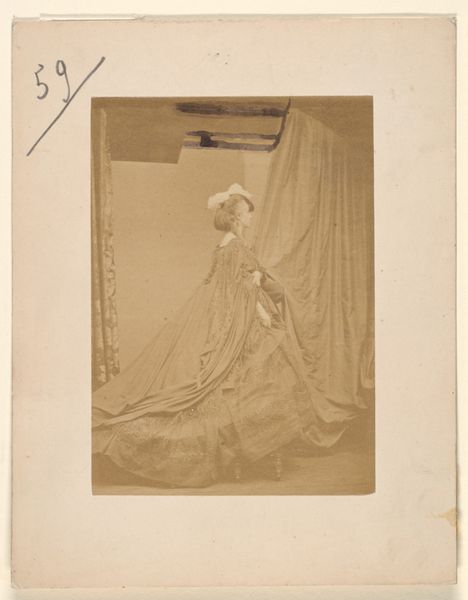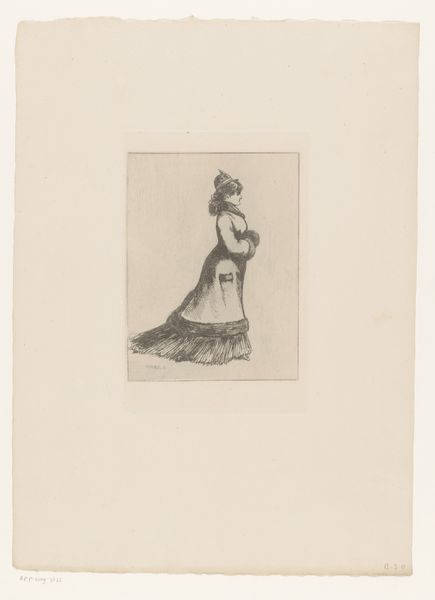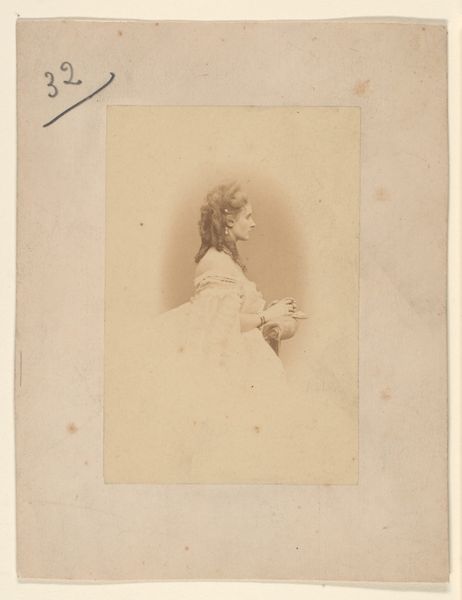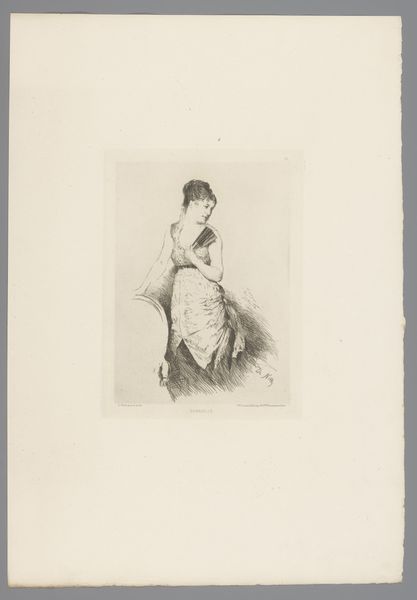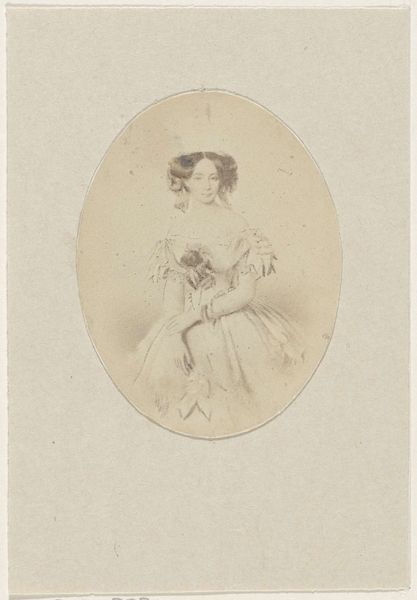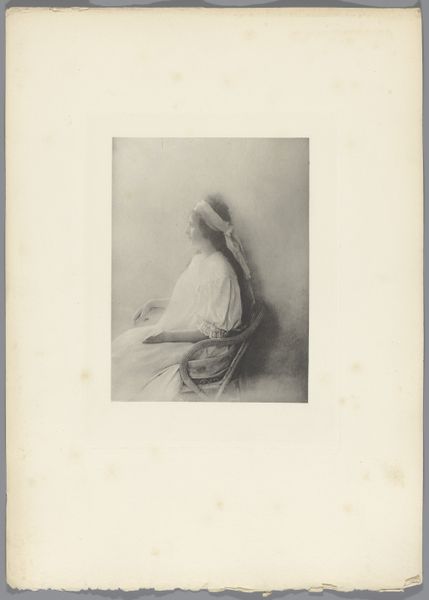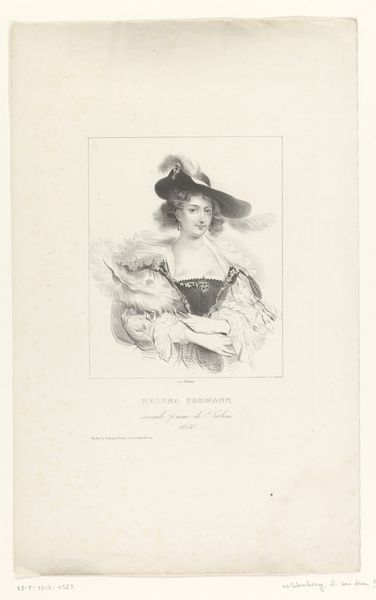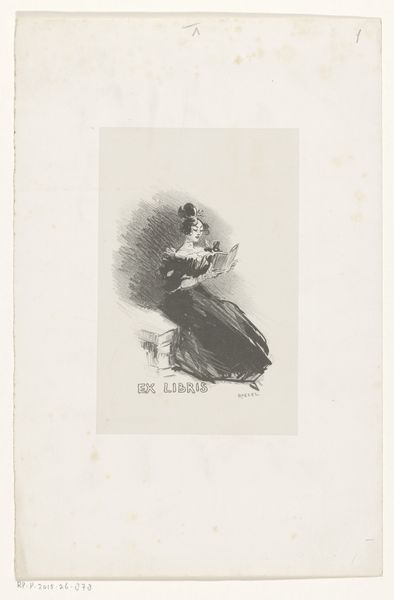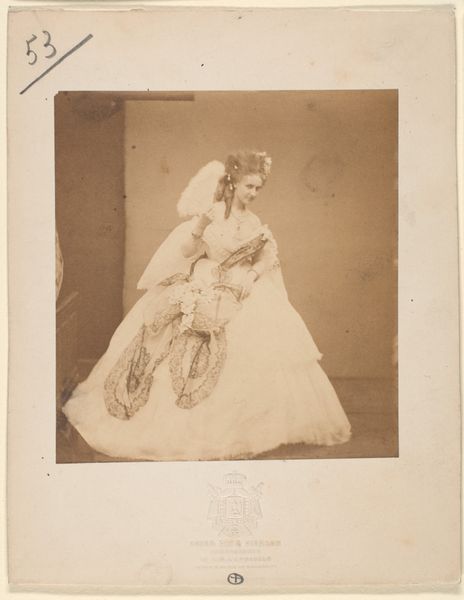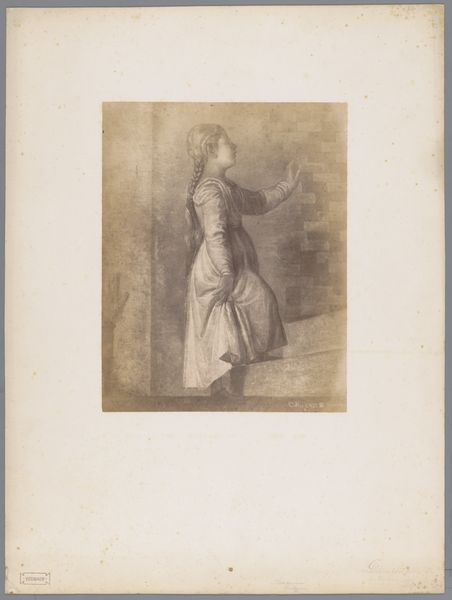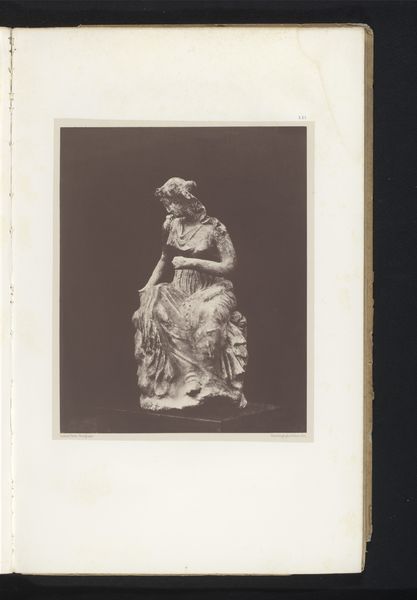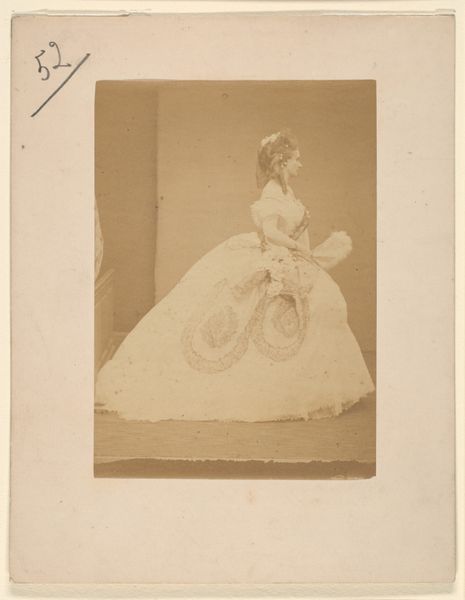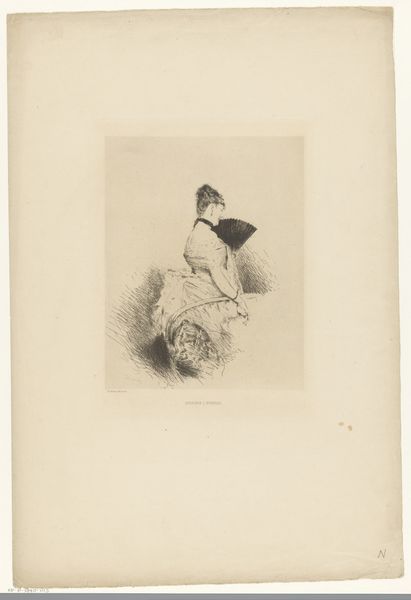
photography
#
portrait
#
photography
Copyright: Public Domain
Curator: This photograph, titled "Les yeux mirés," or "Mirrored Eyes," was created by Pierre-Louis Pierson in the 1860s. It’s currently held at the Metropolitan Museum of Art. Editor: There's something spectral about it, isn't there? The sepia tone lends a soft, almost dreamlike quality to the sitter, while the lace and textures seem to melt into the background. Curator: Precisely. Pierson was known for his close association with the Countess de Castiglione, and the photographic studio's access to her facilitated significant cultural and social productions through portraiture. Editor: Yes, and if you isolate different areas to explore them in a semiotic analysis, the lace in particular is used to convey an ethereal yet worldly aesthetic, connoting ideas of romantic love, fashionable display, or material decadence depending on how you "read" the signs of that texture, pattern, light, and form. Curator: It's interesting you mention the 'reading' of signs. Photographs in this period played a key role in constructing and disseminating images of beauty and power, especially of women. De Castiglione herself understood and actively manipulated her image. Editor: Her understanding of performativity is obvious even from the posture itself. We see the intentionality. Her posture presents an artificial construct—a composition—that attempts to freeze into time an essence of the “feminine ideal” that is ever elusive and intangible. Curator: Indeed. And within courtly culture, dress signified far more than simply garments, it acted as an indication of social positioning, cultural capital and symbolic allegiance, things to keep in mind when trying to “decode” this work. Editor: And it's also the balance—or the imbalance—of light and shadow across the subject’s costume, in addition to the sepia and low saturation in its coloration that draws attention to this construction. All the textures present various light receptors across planes in the artwork's overall pictorial construction. Curator: Well, considering that 'beauty' has been weaponized for political ends, this portrait, along with others, allowed the Countess to play a pivotal role in European high society during the Second Empire, she had many influential social ties and even used them politically to influence figures like Napoleon. Editor: Thank you for sharing all of that contextual and historical significance, now the formal aspects of it ring even more clear. It just highlights the photograph’s inherent elegance and its power to convey her complex presence.
Comments
No comments
Be the first to comment and join the conversation on the ultimate creative platform.
